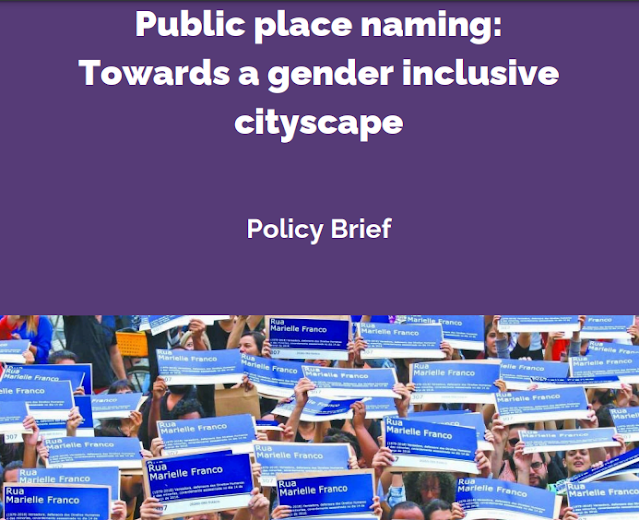The recent Policy Brief on Gender-Inclusive Toponymy, published by the UNESCO Chair in Inclusive Toponymy at the University of Geneva, highlights the urgent need to address gender disparities in public place naming. This comprehensive document advocates for a shift towards more inclusive and representative urban landscapes through actionable strategies and innovative practices.
Why Place Names Matter
Place names are more than functional labels; they are symbols of cultural identity, collective memory, and societal values. Yet, the overwhelming majority of streets, squares, and public spaces are named after men, leaving women and their contributions to history largely invisible. The Policy Brief reveals that less than 10% of personal street names in many cities honor women—a stark reminder of the patriarchal legacy embedded in our urban environments.
The Four-Stage Strategy for Change
The Policy Brief outlines a four-stage framework to guide stakeholders in creating more inclusive public spaces:
Mapping the Issue
By diagnosing the current state of gender representation through statistics, interactive maps, and surveys, cities can identify the extent of the gender gap. Initiatives like Mapping Diversity and Paris Féminin demonstrate how digital tools can visualize disparities and spark public debate.Identifying Eligible Female Personalities
A key step is compiling inventories of notable women whose contributions merit recognition. This includes intersectional approaches that consider diverse backgrounds and fields of influence. Projects like 100Elles in Geneva and Femmes Remarquables du Québec offer inspiring examples.Inventing Places to Name
This phase involves identifying new opportunities for naming—such as newly developed areas, restructured urban zones, or previously unnamed public facilities. It also considers renaming existing spaces with derogatory or outdated names.Naming Qualitatively
The focus shifts to prioritizing visibility and impact. High-profile sites, public transport hubs, and community centers are ideal for amplifying the presence of women's names. Initiatives like Paris’s Place aux Femmes du T3 tramway project showcase the potential for impactful change.
Key Recommendations
- Inclusivity Through Collaboration: Engage local governments, feminist organizations, academics, and community members in the naming process. Participatory assemblies can foster collective ownership and ensure diverse perspectives.
- Education and Awareness: Use exhibitions, school programs, and public events to highlight the historical significance of women in public spaces.
- Innovative Solutions: Combine digital tools like interactive maps with creative campaigns to raise awareness and encourage action.
- Sustainability and Functionality: Balance inclusivity with practical considerations, such as address stability and navigation needs.
Inspiring Case Studies
The Policy Brief draws from inspiring global examples, including:
- Frida Kahlo Way in San Francisco: Renamed to honor the artist and activist, this initiative combines feminist and anti-xenophobic motivations.
- Rue Gabrielle-Perret-Gentil in Geneva: A street named after a pioneering gynecologist, reflecting both historical contributions and modern values.
- Rua Marielle Franco in Rio de Janeiro: A tribute to the human rights activist, symbolizing resilience against oppression.
A Call to Action
This Policy Brief is a call for stakeholders—local authorities, heritage associations, activists, and citizens—to take bold steps in reshaping the cultural and symbolic fabric of our cities. By addressing the gender gap in place naming, we can create more inclusive, representative, and equitable urban landscapes.
Let’s reimagine our public spaces as arenas of diversity, education, and inspiration, ensuring that every street, square, and park tells a story of inclusion.

No comments:
Post a Comment